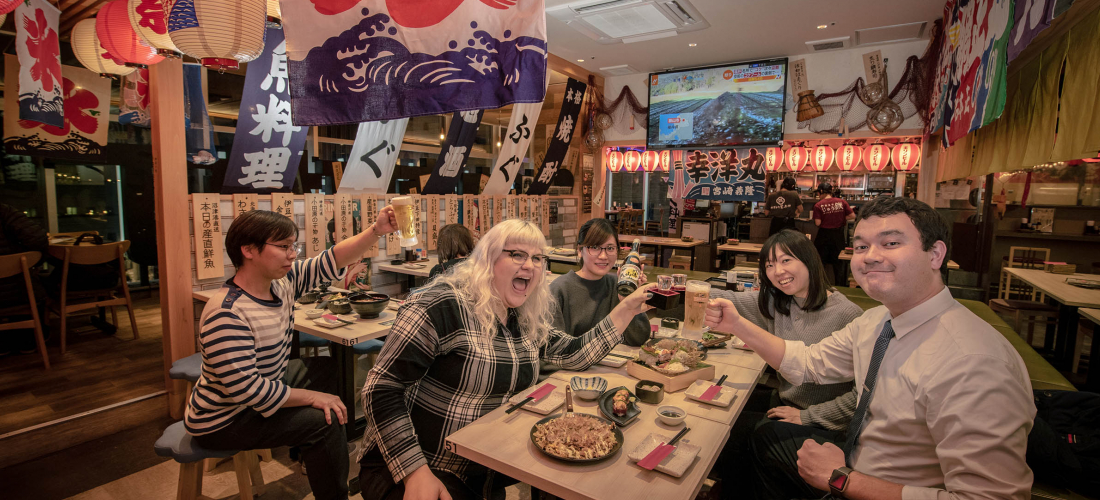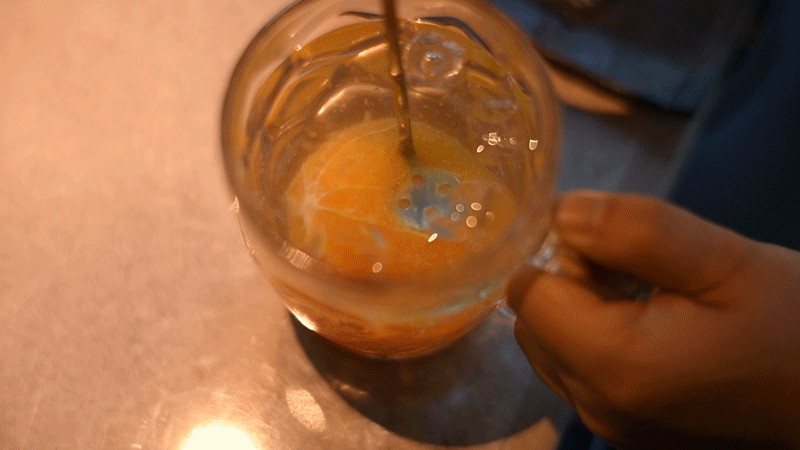
Shinjuku est l'un des endroits les plus animés de Tokyo. C'est le principal lieu de visite grâce à ses monuments tels que la mairie de Tokyo (Tokyo Metropolitan Government Building), le jardin Shinjuku Gyoen, ou encore ses quartiers pour les sorties nocturnes tels que Kabukicho ou Golden Gai. Non seulement ça, mais Shinjuku est également un paradis pour le shopping et offre de nombreuses autres attractions qui plairont forcément à tout le monde.
Si vous demandez à un Japonais, celui-ci vous dira que Kabukicho n'est pas un endroit très sûr car de nombreux yakuza se rassemblent ici, mais cela n'empêche pas les milliers de touristes japonais et étrangers de se promener sans problème. De nombreux lieux de Kabukicho sont surveillés par la police, mais les business des yakuza n'impactent en général jamais les visiteurs.
La zone la plus éclairée de Kabukicho, à savoir le quartier des plaisirs de Tokyo, consiste en de nombreux restaurants, bars à hôtes et hôtesses ou love hotels. L'atmosphère change du tout au tout entre le jour et la nuit. Dans la journée, le quartier est très calme, et la plupart des gens s'y promènent pour y rechercher un restaurant ou un café. Mais à la nuit tombée, les néons s'allument et Kabukicho se réveille.
Comme Shinjuku/Kabukicho est le centre de la vie nocturne de Tokyo, JAPANKURU aimerait vous présenter deux restaurants qui viennent juste d'ouvrir à deux pas du Godzilla. Ces deux restaurants se trouvent dans le même bâtiments, vous pouvez donc choisir un endroit où manger, et un autre où faire l'after dans un style typiquement japonais (nommé "nijikai" 二次会).
Manger à Shinjuku est toujours une bonne idée, quelque soit l'occasion!
Le batiment Kabukicho APM Building vient d'être construit juste à côté du VR ZONE ultra-populaire! Vous y trouverez des tonnes de restaurants, mais cette fois-ci, nous irons aux 9ème et 6ème niveaux (8e et 5e étage)!
Comme mentionné précédemment, ce bâtiment tout neuf à côté de la VR ZONE propose de très nombreux établissements. Mais ceux que vous devez manquer sous aucun prétexte sont le restaurant Yakiniku du nom de Yakiniku X Gyu (焼肉 X 牛) qui servent le plus juteux des boeuf Wagyu jamais goûté jusqu'à maintenant. Et si vous voulez changer d'ambiance, vous trouverez le restaurant de cuisine de rue au style rétro japonais qui offrent divers plats d'Izakaya du nom de Shinjuku Sanchoku Yokocho (新宿産直横丁).

Google Maps
5mins de marche depuis la sortie est de la gare Shinjuku JR
2mins depuis la gare de Shinjuku de la ligne Seibu
 Yakiniku X Gyu
Yakiniku X Gyu 
焼肉 X 牛
9e niveau (8e étage)
Yakiniku X Gyu est spécialisé dans le boeuf wagyu de très haut niveau (classé A5, ce qui est la note maximale). Plutôt que de se concentrer sur du boeuf venant d'une région, ici, sa provenance est variable, seul la qualité est importante. Vous pourrez ainsi goûter du boeuf de Kagoshima, ou encore du wagyu typique de style Yonezawa venant de la région de Yamagata. Le chef ne coupe la viande qu'après avoir reçu une commande, ce qui promet ainsi des tranches fraîches pour chaque repas. Aussi, les boeufs de chaque région ont une particularité. Par exemple, certains lieux proposent d'excellent faux-filets. Le restaurant offrira alors seulement des faux-filets provenant de cette région en particulier.
La plupart des gens connaissent le boeuf de Kobe, mais qu'est-ce que le boeuf wagyu et comment distinguer les deux? La réponse n'est en fait pas très compliquée. Le "wagyu" fait référence au bétail élevé au Japon. Et dans cette catégorie se trouvent différents types de boeufs, comme le boeuf de Kobe ou de Matsusaka, etc. Le nom change en fonction de la façon d'élever le boeuf.
Différentes tables vous seront proposées. Certaines, au milieu du restaurant sont plutôt classiques, vous trouverez également des box pour plus d'intimité. Chaque siège possède un système de ventilation très puissant qui empêchera l'odeur du grill de coller à vos vêtements.
Certaines tables proposent même la télévision! Vous pouvez réserver ce type de table si cela vous intéresse. Il existe également une salle de conférence disponible sous réservation.
En général, le prix du boeuf peut monter à une centaine d'euros suivant le type de viande. Mais les prix sont incroyablement raisonnables ici, et ce, même pour des spécialités japonaises!
Utilisez la graisse du boeuf pour enduire le grill et éviter que la viande colle sur le métal.
Le restaurant propose différentes recommandations pour que vous puissez essayer divers plats sans trop vous tracasser. Chaque plat sur la table vient avec la photo d'une vache dessus, ce qui est plutôt fun et utile car un point rouge sur le corps de l'animal vous montre de quelle partie du corps provient votre repas. C'est un bon exemple de l'hospitalité à la japonaise dite "omotenashi" même pour ceux qui peuvent lire le japonais sans être un expert en viande animale!
Trois types de menus sont recommandés par la maison: à 6000 yens, à 8000 yens ou à 10 000 yens. La variété des nourritures changent, mais chaque menu est accompagné de boissons avec ou sans alcool à volonté pour deux heures!
Leur cocktail "gin and meat" au gin et fruits est à essayer! Il s'agit d'une sorte de gin tonic dans lequel a été ajoutés des raisins, des oranges, des pommes, des kiwis et des bananes.
Une sorte de cuillère vous est proposée pour presser le fruit de votre choix dans la boisson.
Il existe de nombreux yakiniku à Shinjuku, mais si vous cherchez un endroit paisible qui ne vous étouffe pas sous un nuage de fumée et qui servent du boeuf japonais de haute qualité, nous vous recommandons fortement Yakiniku X Gyu.

Google Maps



 Shinjuku Sanchoku Yokocho
Shinjuku Sanchoku Yokocho 
(新宿産直横丁)
6e étage
C'est au 6e niveau (5e étage en français) que se trouve le Shinjuku Sanchoku Yokocho (新宿産直横丁). Son suggère une nourriture à base de produits frais et locaux, ce qui nous a piqué notre curiosité. Vous pouvez manger toutes sortes de plats, tels que des sashimi d'Osaka, des okonomiyaki, des yakitori (brochettes de poulets), des steaks etc. Commandez votre repas préféré et asseyez-vous! Le lieu est particulièrement agréable pour les familles ou les groupes, et pour faire les after ("nijikai" 二次会).
Le décor de l'étage entier ressemble à une rue commerçante qu'on trouve dans les quartiers animés. En traversant le restaurant, vous y verrez des posters de l'ère Showa, des lanternes, ainsi que différents types de drapeaux japonais. Rien de mieux que cet izakaya pour goûter à l'atmosphère rétro du Japon du début du XXe siècle.
 Fruits de mer
Fruits de mer
 Yakitori
Yakitori
 Okonomiyaki
Okonomiyaki
 Teppanyaki
Teppanyaki
1. 
2. 
3. 
4. 
Si vous préférez manger du poisson alors que votre groupe voudrait manger de la viande grillée, ce restaurant est un parfait entre-deux. Tout ce qu'il y a à faire est se lever et se diriger vers les différents stands proposés, attraper quelque chose à manger, et vous rassoir tranquillement avec vos amis!
Le rapport quantité/prix est aussi très appréciable. Vous en avez largement pour votre argent sans compter que vous n'avez pas à payer les frais de service "otoshi" comme dans les izakaya normaux.
Un menu pour le déjeuner est aussi disponible à midi!
Formule midi – Katsudon (porc grillé au riz)
Formule midi – Sashimi
Il existe une grande variété de menus, tous à des prix très réduits! Cela vous permet de goûter à toutes sortes de spécialités japonaises pour peu de frais et à n'importe quelle heure de la journée (le restaurant est ouvert de 11:00 jusqu'à 4h du matin!) C'est l'endroit idéal pour les personnes qui dorment à Shinjuku, ont râté le dernier train ou cherchent simplement un endroit pour trainer, manger et boire toute la nuit.

Google Maps



En plus de manger et boire, il existe plein de choses intéressantes à faire à Kabukicho. Vous y trouverez des salles de bowling ou des salles de jeux, ainsi que d'autres endroits unique au Japon et connu dans le monde entier. Voici quelques recommandations avant ou après votre visite dans un restaurant.
 ROBOT RESTAURANT
ROBOT RESTAURANT 
Peu de personnes ne connaissent pas le Robot Restaurant de Tokyo. Ouvert en 2012, vous avez certainement vu ces robots à la poitrine gigantesque se promener dans toutes les rues de Tokyo. Aujourd'hui, le restaurant n'a même plus besoin de faire de la publicité tant le succès est au rendez-vous. Nous sommes de grands fans de ce lieux et nous le recommanderons jamais assez! Ce n'est pas bon marché car la nourriture et les boissons sont inclus dans le tarif, mais avec le coupon JAPANKURU, vous recevrez 25% de réduction.

Google Maps

*repas non inclus, une boîte-repas coûte 1000 yens*

Horaires: 16:00~23:00
Réservation: 9:00~22:00
Online reservations here!


 inSPYre
inSPYre 
Les escape rooms deviennent de plus en plus populaire dans le monde entier, et le Japon ne déroge pas à la règle. Le concept d'inSPYre est que vous devenez un espion qui s'est infiltré dans une base ennemie et doit résoudre des énigmes afin de vous échapper. Il existe différents types de rooms et c'est ouvert de 11:00 à 5:00 du matin le jour suivant. Vous pouvez donc y jouer quand vous voulez. Il existe en plus un coupon pour y jouer 2 heures illimitées pour les clients étrangers.

Google Maps


・2 jeux (+ boissons à volonté) 1980yens
・3 jeux (Lun-Ven à partir de 18h) 1980yens
・3 jeux (Lun-Ven de 18h à 23h + boissons à volonté) 2480yens
・3 jeux (En semaine et vacances à partir de 23h + boissons à volonté) 2480yens
・5 jeux (Lun-Ven à partir de 23h, + boissons à volonté) 3480yens
・"Asobihodai" Jouer à volonté (Vacances, dim-jeu de 23:30 à 2:00, + boisson à volonté) 3480yens
・"Asobihodai" (Ven, sam, jours avant les vacances de 23:30 à 2:00, + boisson à volonté) 3980yens
*Dernier jeu avant fermeture à 4:30

 VR ZONE SHINJUKU
VR ZONE SHINJUKU 
VR ZONE SHINJUKU est un centre de réalité virtuelle qui a ouvert en 2017. Le lieu a tout de suite attiré le regard du public au Japon car ce n'est rien d'autre que BANDAI NAMCO qui le possède! Il existe bien d'autres types de jeux en plus de la VR, même si cette dernière est la principale attraction!

Google Maps

-Pas de jours fériés
Age: 7 ans et plus
(Nécessite l'accord des parents pour les moins de 13 ans)
(Certaines activités nécessite de bonnes conditions physiques)


Lisez JAPANKURU
Ou ajoutez nous sur Instagram et Facebook pour partager vos photos du Japon








































 >> Find out more at Japankuru.com! (link in bio)
#
>> Find out more at Japankuru.com! (link in bio)
#





 The Robot Restaurant is gone, but the Samurai Restaurant is here to take its place. Check it out, and don't forget your coupon!
The Robot Restaurant is gone, but the Samurai Restaurant is here to take its place. Check it out, and don't forget your coupon!
 신주쿠의 명소 로봇 레스토랑이 사무라이 레스토랑으로 부활! 절찬 쿠폰 발급중
신주쿠의 명소 로봇 레스토랑이 사무라이 레스토랑으로 부활! 절찬 쿠폰 발급중
 18歲以上才能入場的歌舞秀,和你想的不一樣!拿好優惠券去看看~
#tokyo #shinjuku #samurairestaurant #robotrestaurant #tokyotrip #도쿄여행 #신주쿠 #사무라이레스토랑 #이색체험 #할인이벤트 #歌舞伎町 #東京景點 #武士餐廳 #日本表演 #日本文化體驗 #japankuru #japantrip #japantravel #japanlovers #japan_of_insta
18歲以上才能入場的歌舞秀,和你想的不一樣!拿好優惠券去看看~
#tokyo #shinjuku #samurairestaurant #robotrestaurant #tokyotrip #도쿄여행 #신주쿠 #사무라이레스토랑 #이색체험 #할인이벤트 #歌舞伎町 #東京景點 #武士餐廳 #日本表演 #日本文化體驗 #japankuru #japantrip #japantravel #japanlovers #japan_of_insta
 코지마 x 빅 카메라 쿠폰으로 일본 가전 제품 쇼핑하기
#pr #japankuru #japanshopping #kojima #biccamera #japaneseskincare #yaman #dji #osmopocket3 #skincaredevice #日本購物 #美容儀 #相機 #雅萌 #日本家電 #일본여행 #면세 #여행꿀팁 #일본쇼핑리스트 #쿠폰 #일본쇼핑 #일본브랜드 #할인 #코지마 #빅카메라 #japankurucoupon
코지마 x 빅 카메라 쿠폰으로 일본 가전 제품 쇼핑하기
#pr #japankuru #japanshopping #kojima #biccamera #japaneseskincare #yaman #dji #osmopocket3 #skincaredevice #日本購物 #美容儀 #相機 #雅萌 #日本家電 #일본여행 #면세 #여행꿀팁 #일본쇼핑리스트 #쿠폰 #일본쇼핑 #일본브랜드 #할인 #코지마 #빅카메라 #japankurucoupon











































